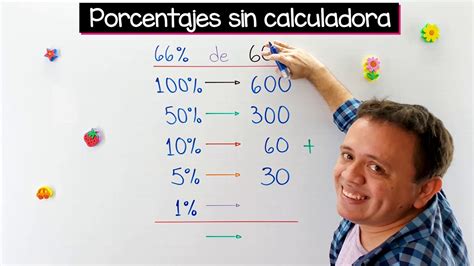Cuánto Es El 10 De 3000
Kalali
Apr 01, 2025 · 4 min read

Table of Contents
Calculating 10% of 3000: A Comprehensive Guide
Finding 10% of a number is a fundamental skill in mathematics with widespread applications in various aspects of daily life, from calculating discounts and taxes to understanding financial statements and statistics. This article will comprehensively explore how to calculate 10% of 3000, providing multiple methods to demonstrate the concept and its practical relevance. We'll delve into the underlying principles and offer additional tips to help you master percentage calculations.
Understanding Percentages
A percentage is a fraction or ratio expressed as a number out of 100. The symbol "%" denotes percentage. For example, 10% means 10 out of 100, which can be written as the fraction 10/100 or the decimal 0.1. Understanding this fundamental concept is crucial for solving percentage problems.
Method 1: Direct Calculation using Decimal Multiplication
The most straightforward method to calculate 10% of 3000 involves converting the percentage to its decimal equivalent and multiplying it by the number. As mentioned earlier, 10% is equivalent to 0.1. Therefore:
10% of 3000 = 0.1 * 3000 = 300
This method is efficient and easy to perform, even with a basic calculator. It's highly recommended for its simplicity and speed.
Method 2: Fraction Method
Percentages can also be expressed as fractions. 10% can be represented as 10/100, which simplifies to 1/10. To calculate 10% of 3000 using this method:
10% of 3000 = (1/10) * 3000 = 3000/10 = 300
This method clearly demonstrates the underlying fraction concept and is particularly useful for understanding the proportional relationship between the percentage and the whole number.
Method 3: Using Proportions
This method involves setting up a proportion to solve for the unknown value. We can set up a proportion as follows:
- 10/100 = x/3000
Where 'x' represents 10% of 3000. To solve for x, we cross-multiply:
- 10 * 3000 = 100 * x
- 30000 = 100x
- x = 30000/100 = 300
This method reinforces the concept of ratios and proportions and is valuable for solving more complex percentage problems.
Real-World Applications of Calculating Percentages
The ability to calculate percentages quickly and accurately is essential in many real-life scenarios:
-
Discounts: Many retail stores offer discounts on products, often expressed as percentages. Knowing how to calculate the discount amount helps you determine the final price. For example, a 10% discount on a $3000 item would be $300, resulting in a final price of $2700.
-
Taxes: Sales taxes are commonly calculated as a percentage of the purchase price. Understanding percentage calculations allows you to determine the total cost of an item including taxes.
-
Tips: Calculating tips in restaurants often involves determining a percentage of the bill amount. For example, a 10% tip on a $3000 bill would be $300.
-
Interest Rates: Interest rates on loans and investments are expressed as percentages. Calculating interest earned or paid requires understanding percentage calculations.
-
Financial Statements: Financial statements such as income statements and balance sheets use percentages extensively to represent ratios and proportions of different financial items. Being able to interpret and calculate these percentages is crucial for financial analysis.
-
Statistics: Percentages are commonly used in statistics to represent proportions and probabilities. Understanding percentage calculations is essential for interpreting statistical data and drawing meaningful conclusions.
Expanding on Percentage Calculations: Beyond 10%
While this article focuses on calculating 10% of 3000, the principles can be applied to any percentage calculation. For example:
-
Calculating 20% of 3000: Multiply 3000 by 0.2 (the decimal equivalent of 20%), resulting in 600.
-
Calculating 5% of 3000: Multiply 3000 by 0.05, resulting in 150.
-
Calculating 15% of 3000: Multiply 3000 by 0.15, resulting in 450.
To calculate any percentage of a number, simply convert the percentage to its decimal equivalent and multiply it by the number.
Tips for Mastering Percentage Calculations
-
Memorize common percentage-to-decimal conversions: Knowing that 10% = 0.1, 25% = 0.25, 50% = 0.5, and 75% = 0.75 can significantly speed up calculations.
-
Practice regularly: The more you practice percentage calculations, the faster and more accurate you will become. Try solving various percentage problems using different methods.
-
Use a calculator: For more complex calculations, a calculator can be a valuable tool to ensure accuracy.
-
Check your work: Always double-check your calculations to avoid errors. You can verify your answer using a different method to confirm its accuracy.
Conclusion
Calculating 10% of 3000, and percentages in general, is a fundamental mathematical skill with diverse applications across various fields. By understanding the underlying principles and utilizing different methods, you can master percentage calculations and confidently apply them to solve real-world problems, from simple shopping calculations to complex financial analyses. Remember to practice regularly and utilize the tips provided to enhance your understanding and speed. Mastering percentages empowers you with a powerful tool for navigating the numerical aspects of daily life and professional pursuits.
Latest Posts
Latest Posts
-
What Is The Amplitude Of A Transverse Wave
Apr 01, 2025
-
How To Birds Eggs Get Fertilized
Apr 01, 2025
-
Which Of These Organelles Produces H2o2 As A By Product
Apr 01, 2025
-
How Are The Wavelength Frequency And Wave Speed Related
Apr 01, 2025
-
What Percent Of 10 Is 25
Apr 01, 2025
Related Post
Thank you for visiting our website which covers about Cuánto Es El 10 De 3000 . We hope the information provided has been useful to you. Feel free to contact us if you have any questions or need further assistance. See you next time and don't miss to bookmark.
